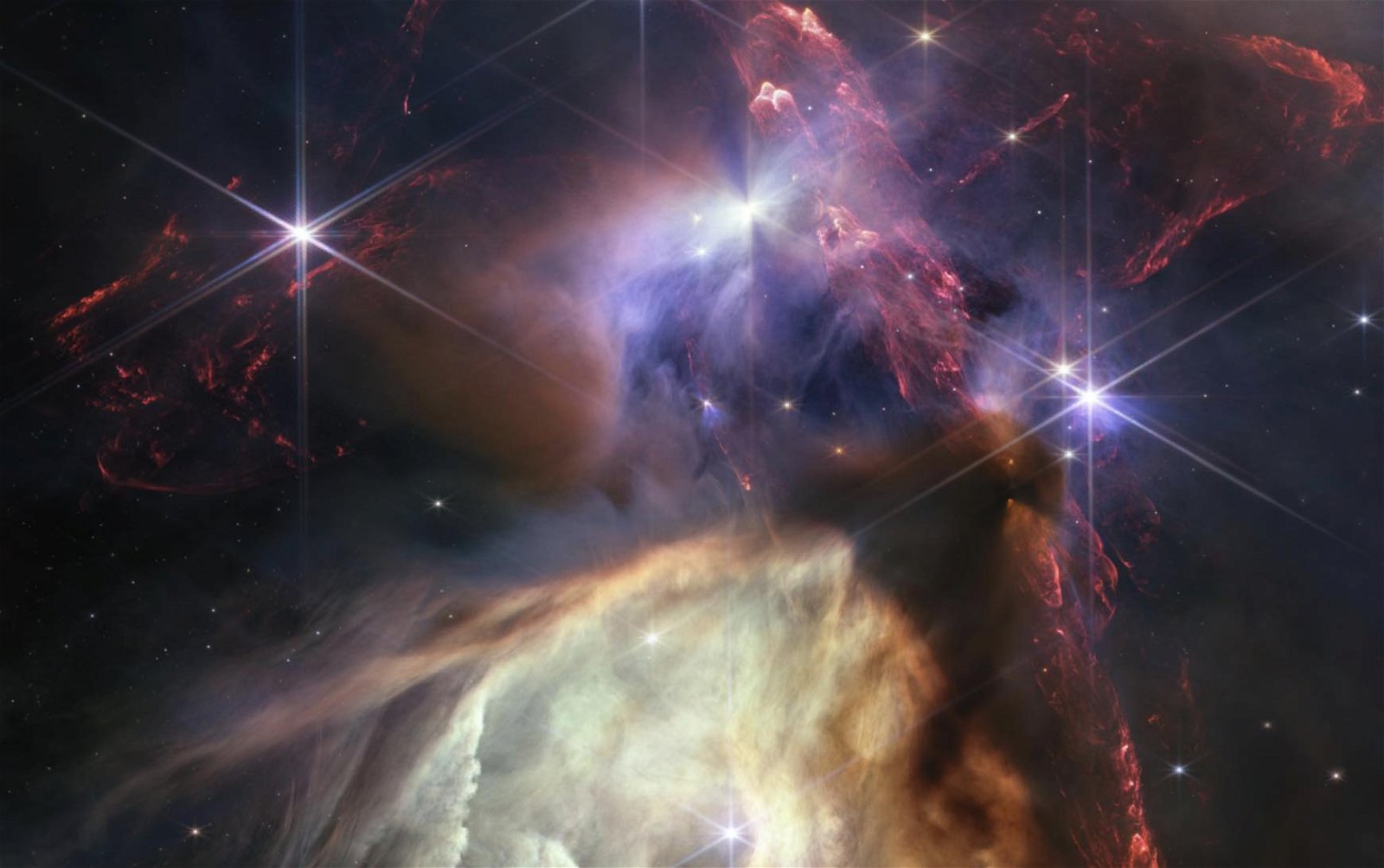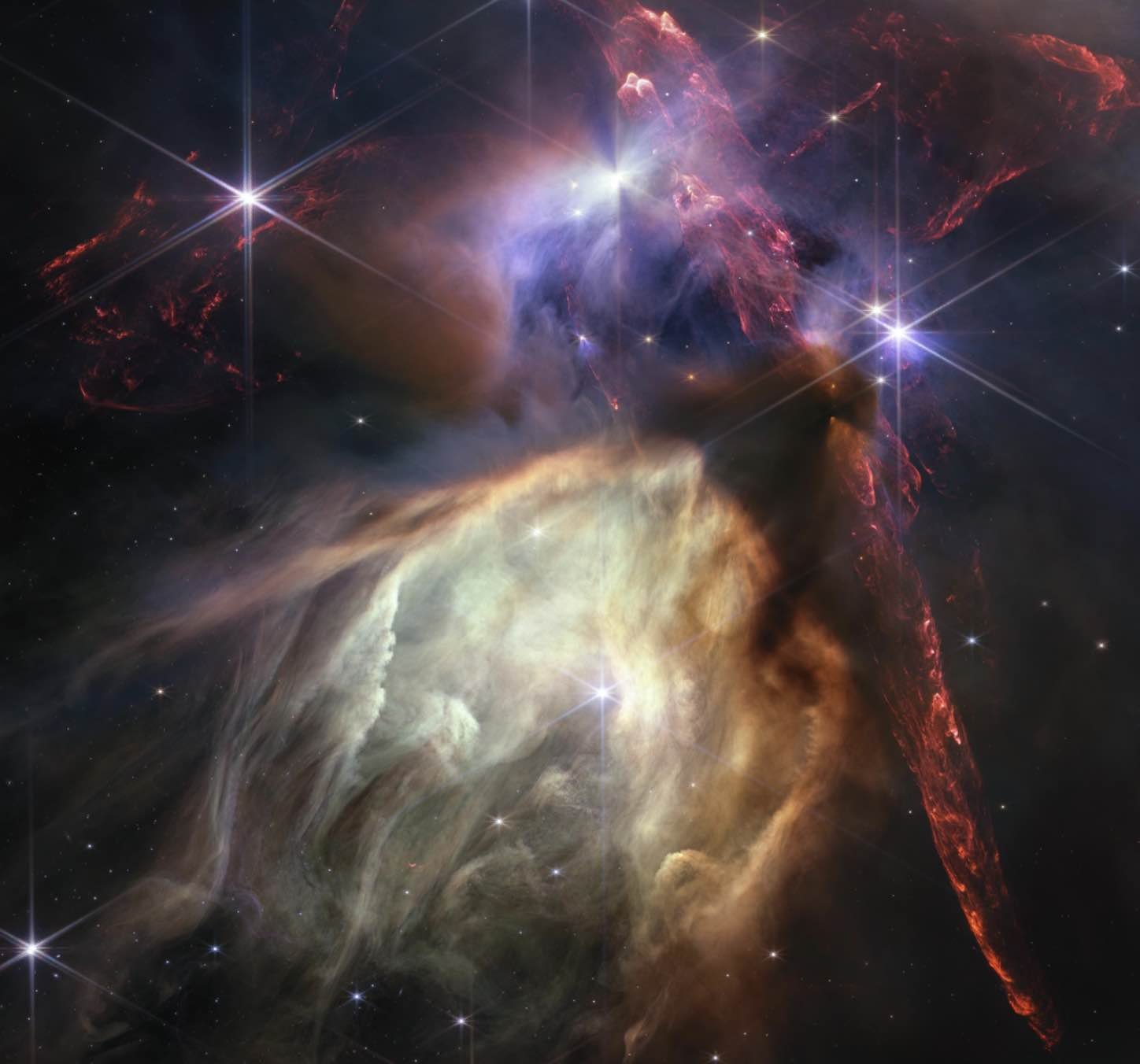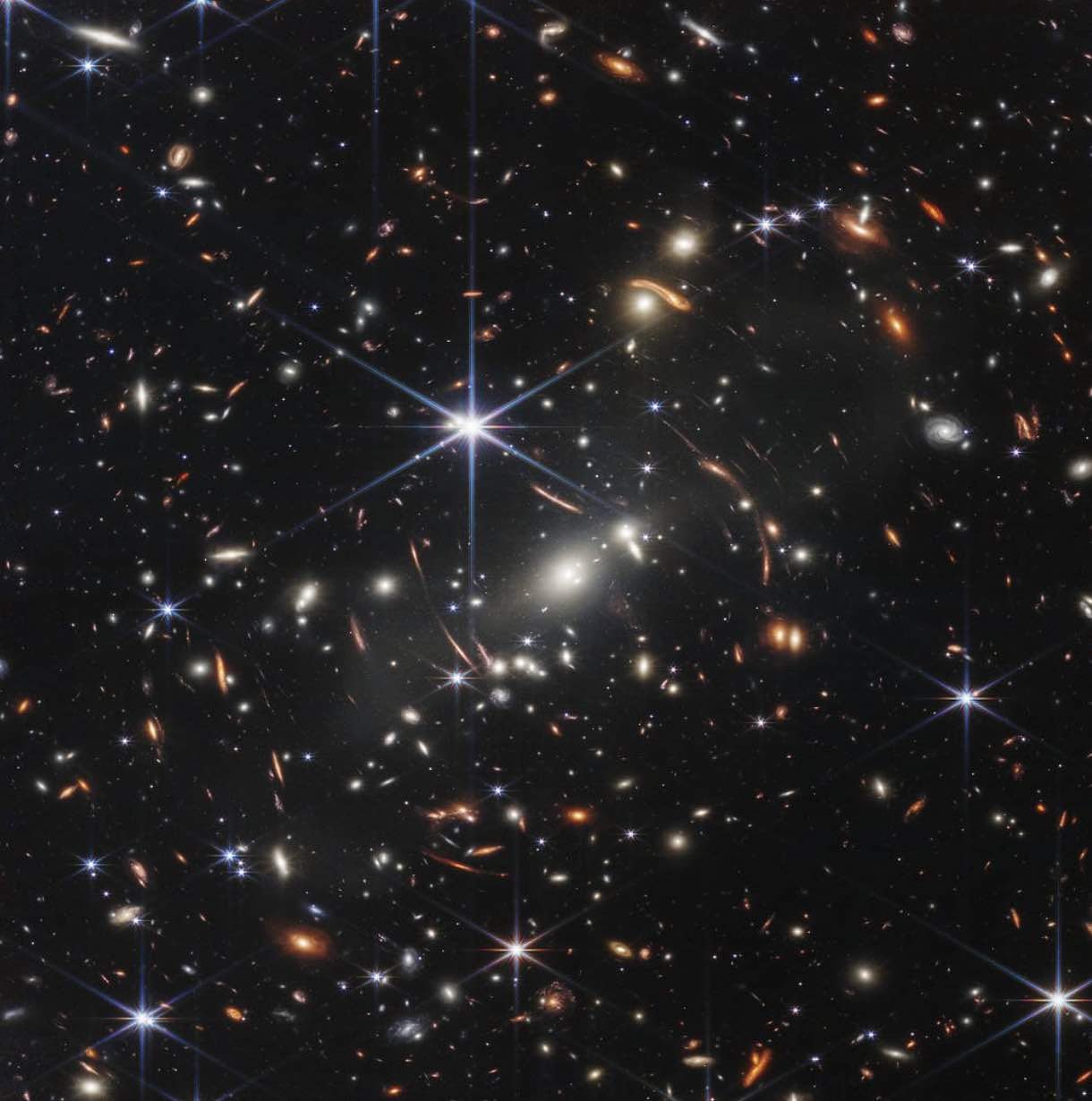

Welcome to this week’s installment of The Intelligence Brief… it has now been one year since NASA’s James Webb Space Telescope began operations, and to mark its first anniversary, NASA has released new stunning imagery collected by its premiere orbital observatory that provides us a view of a distant stellar region in striking detail. This week, we’ll be looking at 1) what Webb has achieved in its first year since heading into orbit, 2) what the new imagery reveals about a stellar nursery called Pho Ophiuchi, and 3) what NASA scientists and agency leadership have said about Webb’s operations as its anniversary arrives.
Quote of the Week
“Where there is an observatory and a telescope, we expect that any eyes will see new worlds at once.”
– Henry David Thoreau
Latest Stories: Recent stories we’ve been following at The Debrief include this newly released video that shows Israel’s new anti-missile system blasting target drones right out of the sky. Elsewhere, a plasma spectrometer has been delivered to NASA to assist the agency’s investigations into a mysterious area on the Moon that is the location of an unexplained magnetic anomaly. You’ll find links to these, and all our recent stories at the end of this week’s newsletter.
Podcasts: In podcasts from The Debrief, on The Micah Hanks Program, I take a look at unidentified acoustic phenomena and the strange croaking “Quackers” encountered by Soviet submarines during the height of the Cold War. Also, be sure to catch The Debrief Weekly Report, where MJ Banias and Stephanie Gerk discuss the GWB discovery, a 25-year-old bet over the theory of human consciousness, and the realization that you may actually suck at detecting “bullshit.” You can subscribe to all of The Debrief’s podcasts, including audio editions of Rebelliously Curious, by heading over to our Podcasts Page.
Video News: Recently on Rebelliously Curious, Chrissy Newton spoke with Richard Mansell, Chief Executive Officer and Co-founder of IVO Ltd, as they discuss how the organization is working on a new all-electric thruster called The IVO Quantum Drive that draws limitless power from the Sun. Also, check out the latest episode of Ask Dr. Chance, where Chance has a conversation with Tim Russ from Star Trek. Be sure to watch these videos and other great content from The Debrief on our official YouTube Channel.
With all that behind us, let’s turn our attention to the recent gifts from the James Webb Space Telescope, which it delivered to NASA–and the world–to mark it’s first year in operation.
The James Webb Space Telescope Celebrates One Year in Operation
Since its launch last year, NASA’s James Webb Space Telescope has already proven itself as an incredible asset in the search for answers to many of the lingering questions about our universe.
With the stunning imagery Webb has collected in just twelve months of operation, NASA said this week that the telescope “has delivered on its promise of revealing the universe like never before in its first year of science operations.”
In celebration of its anniversary, NASA recently released one of Webb’s newest images, featuring a nursery for star formation located in an area of interstellar clouds consisting of different nebulae within the Ophiuchus constellation some 390 light years from Earth, known as the Rho Ophiuchi cloud complex.
A Distant Cloud Complex in Stunning Detail
Released on July 12, Webb’s latest image is more than just a snapshot of the nearest region to Earth where stellar formation occurs. At less than 400 light years away, there are no stars in the foreground obstructing Webb’s view of Pho Ophiuchi, meaning that the recent imagery the telescope obtained provides some of the greatest clarity and depth of any infrared imagery any human-made telescope has ever obtained of the distant universe.
Nicola Fox, associate administrator of NASA’s Science Mission Directorate, called the Webb images “a breathtaking treasure trove of images and science that will last for decades,” adding that Webb’s sharp eye has “given us a more intricate understanding of galaxies, stars, and the atmospheres of planets outside of our solar system than ever before, laying the groundwork for NASA to lead the world in a new era of scientific discovery and the search for habitable worlds.”


The single Webb image comprises a region with close to 50 Sunlike stars of equal or lesser mass than our nearest star and also includes darker areas which are the site of the formation of protostars, the collections of contracting gas that astronomers believe represent the early stages in star development.
With the incredible detail Webb captured in the image, red areas that appear prominently throughout it represent jets of molecular hydrogen being propelled from new stars as they blast through their cosmic wombs of dust, producing jets outward in either direction.
Klaus Pontoppidan, Webb project scientist who worked at Baltimore’s Space Telescope Science Institute, said the new image grants humans a glimpse at “a very brief period in the stellar lifecycle with new clarity.”
Pontoppidan adds that early in its lifetime, our Sun also went through a similar period in its development, and now Webb is allowing us a look at what stellar formation processes occurred within our own solar system long ago.
Webb Delivers on Its Anniversary
NASA Administrator Bill Nelson spoke with enthusiasm this week about Webb’s achievements, praising the accomplishments of the NASA team and its international partners who the launch of its premiere orbital science observatory possible.
“In just one year, the James Webb Space Telescope has transformed humanity’s view of the cosmos, peering into dust clouds and seeing light from faraway corners of the universe for the very first time,” Nelson said in a statement. “Every new image is a new discovery, empowering scientists around the globe to ask and answer questions they once could never dream of.”


Calling Webb an “investment in American innovation,” Nelson added that NASA and its partners aim to work toward ensuring that Webb will continue to deliver remarkable discoveries in the years ahead, all of which “will continue to improve our understanding of the origins of the universe – and our place in it.”
That concludes this week’s installment of The Intelligence Brief. You can read past editions of The Intelligence Brief at our website, or if you found this installment online, don’t forget to subscribe and get future email editions from us here. Also, if you have a tip or other information you’d like to send along directly to me, you can email me at micah [@] thedebrief [dot] org, or Tweet at me @MicahHanks.


Here are the top stories we’re covering right now…
- Gravitational Waves Could Soon Revolutionize the Hunt for Intelligent Alien Civilizations. Here’s How.
Scientists say that gravitational waves could play a more significant role in the search for extraterrestrial intelligence (SETI) in the decades ahead. Here’s why.
- Israeli Air Force Releases Video of Bible-Inspired Anti-Missile System “David’s Sling” Blasting Targets from the Sky
Newly released video shows Israel’s new anti-missile system David’s Sling blasting target drones right out of the sky.
- Unexplained Magnetic Anomaly on the Moon Prompts NASA Investigation with Next-Generation Plasma Spectrometer
A plasma spectrometer has been delivered to NASA to assist the agency’s investigations into a mysterious area on the Moon that is the location of an unexplained magnetic anomaly.
- Autonomous Security Robots Are Starting to Patrol Schools and Cities, Despite Controversies
From schools to major cities, an increasing number of sectors are turning to autonomous security robots to bolster public safety.
- Travel 13.4 Billion Years Back in Time With This Video from the James Webb Space Telescope
NASA just released a stunning new video visualization using data from the Hubble and James Webb Space Telescopes that magically transports the viewer 13.4 billion years back in time.
- North Korea Accuses U.S. of Surveillance Flights, Threatens to Shoot Down Spy Planes in Its Airspace
North Korea issued a warning this week that U.S. spy planes detected within its airspace may be shot down amidst accusations that American drones and other aircraft are conducting surveillance.
- Impossible Quantum Drive That Defies Known Laws of Physics Scheduled for “Do or Die” October Space Flight
In October of this year, IVO LTD.’s physics-defying Quantum Drive will launch into low earth orbit, where it will get it first test in the vacuum of space.
- Photonic Time Crystal Discovery Could Have “Profound Implications” for Optics, Lead to New Disruptive Tech
“We don’t yet understand exactly how it happens.” A breakthrough with photonic time crystals in the near-visible spectrum could lead to new approaches in optics and the creation of novel disruptive technologies.
- NASA’s X-59 Maiden Flight Brings Us Closer to Sonic-Boom Free Future For Supersonic Travel
NASA’s X-59 experimental aircraft is on the brink of its inaugural test flight, paving the way for quieter supersonic air travel.
- Buried on the Far Side of the Moon, the Detection of a Mysterious Heat-Emitting Object Leads to an Unexpected Discovery
The detection of a large, heat-emitting mass buried beneath the far side of the Moon suggests it may have a history more like our planet than scientists once realized.
- You’re a Wizard, Einstein! This week on The Debrief Weekly Report…
On today’s episode, we discuss Lockheed Martin’s latest secret aircraft, a German university’s deep dive into magical texts, and new research that proves time moved slower in the early days of the universe. You can listen to the episode on Apple Podcasts, Spotify, by riding some gravity waves, or simply download it wherever you get your podcasts. Please make sure to click ‘Subscribe’ and Rate and Review the podcast. Every Friday, join hosts MJ Banias and Stephanie Gerk […]
- Cutting-Edge Solar-Powered Thruster Taps Limitless Energy from the Sun
In this episode of Rebelliously Curious, Richard Mansell, discusses his cutting-edge solar-powered thruster that taps energy from the Sun.
- DARPA’S New SHIELD Program Plans to Purge Your Blood of Pathogens, Roomba-Style
This week’s Intelligence Brief examines DARPA’s new SHIELD program, which aims to protect warfighters against infections from pathogens.
- Italy’s Fascist UFO Files
This week, we examine the strange history of Italy’s Fascist UFO files, and critically examine their relationship to the modern UFO crash wreckage retrieval debate on The Micah Hanks Program.
- An Ethical Dilemma: Study Explores People’s Views on the Morality of AI Decisions
A recent study sheds light on the nuanced way people view the morality of decisions made by artificial intelligence (AI).
- Threads Picks Up Millions of Users Within Hours of Launch as Meta’s New Alternative to Twitter
In the latest blow dealt in a battle between social media giants, Meta Platforms officially launched its new Threads app on Wednesday, amassing millions of followers within just a few hours.
- Artists Beware: “Game Changer” Test Results Show AI is More Creative Than 99% of Humans
AI tool ChatGPT has been shown to be more creative than 99% of humans who underwent the same standardized test for creativity.
